Whether you’re a muck diver at heart or not, you’ve likely heard about Lembeh, the best place in the world for spotting the ocean’s weirdest critters. Just off the coast of North Sulawesi in Indonesia, the Lembeh Strait first became popular in the mid-1990s when Larry Smith pioneered diving in the area. Today, it’s a popular diving destination, full of dive resorts and home to dozens of dive sites. Luckily for you, it’s also easier than ever to access.
If you’re ready to dive into Lembeh and check off some bucket list marine life sightings, keep reading for more info about this top diving destination.
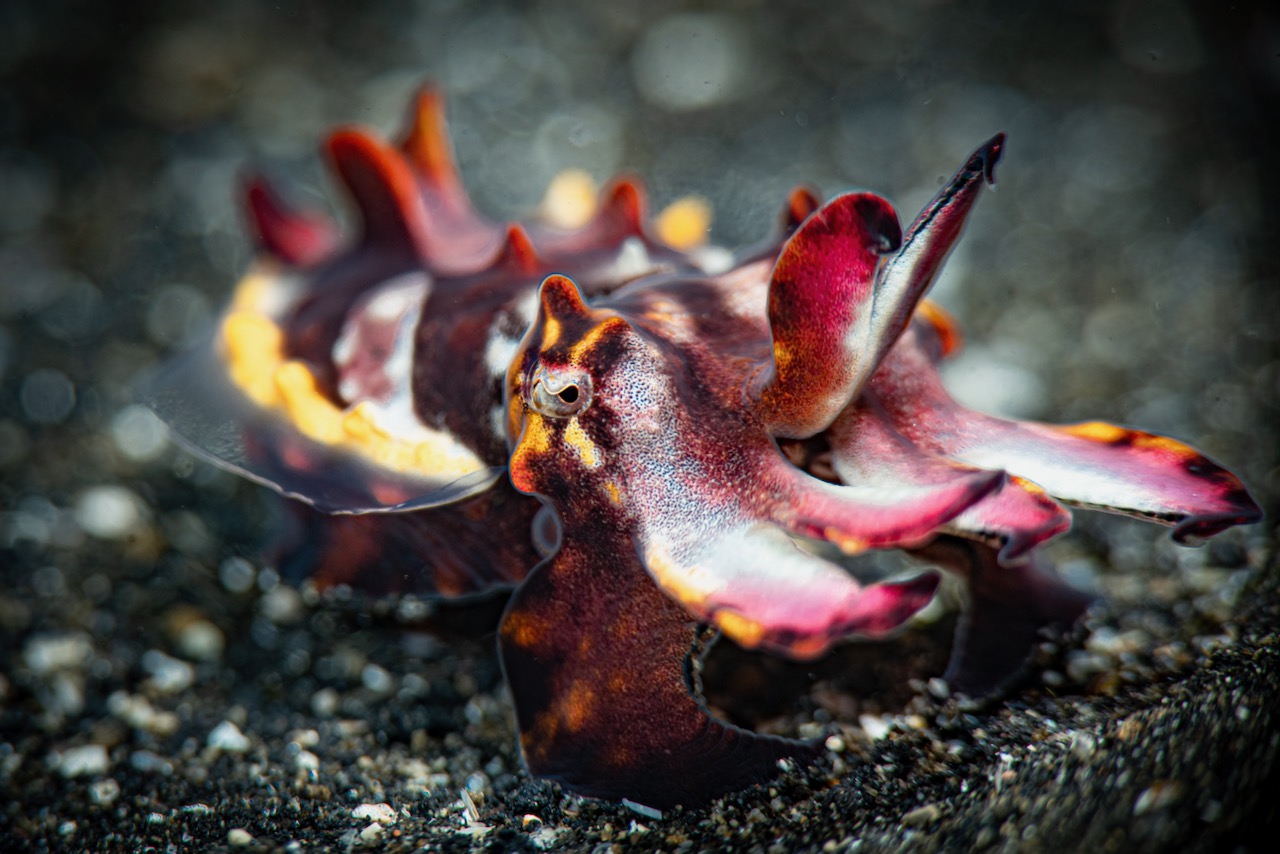
The reason 99% of divers travel to Lembeh is to spot (and photograph) extraordinary marine life. After all, the diving environments here aren’t beautiful in the normal sense of the word (unless you’re diving the walls and reefs of Lembeh Outside), but the strait’s sandy slopes and rubble coral bottom provide the perfect habitat for many unique species. And, many species in the Lembeh Strait have adapted extraordinary mimicry and camouflage abilities to blend into their surroundings or imitate other creatures.
So what marine life can you see in the Lembeh Strait? The answer to that question is an entire encyclopedic volume of vibrant, yet small, marine species. There are approximately 1101 marine species that call the Lembeh Strait home.
During any given dive trip to Lembeh, you might spot:
Nudibranchs Aeolid nudibranch Ceratosoma tenue nudibranch Phyllodesmium longicirrum nudibranch Okenia kendai nudibranch Doriprismatica atromarginata nudibranch Octopuses Blue-ringed octopus Wonderpus Mimic octopus Coconut octopus Starry night octopus Hairy octopus Cuttlefish Flamboyant cuttlefish Dwarf cuttlefish Broadclub cuttlefish Shrimp Harlequin shrimp Donald duck shrimp Coleman shrimp Spiny tiger shrimp Mantis shrimp Crabs Harlequin swimming crab Orangutan crab Pom-pom crab Frogfish Hairy frogfish Painted frogfish Warty frogfish Fish Ambon scorpionfish Leaf scorpionfish Mandarinfish Stonefish Stargazer Flying gurnard Schooling striped catfish Spiny devilfish Bangaii cardinalfish Seahorses and Pipefish Pygmy seahorse Pontoh’s pygmy seahorse Ornate ghost pipefish Robust ghost pipefish Halimeda ghost pipefish Eels Ribbon eel Moray eel Garden eel Snake eel And, so much more!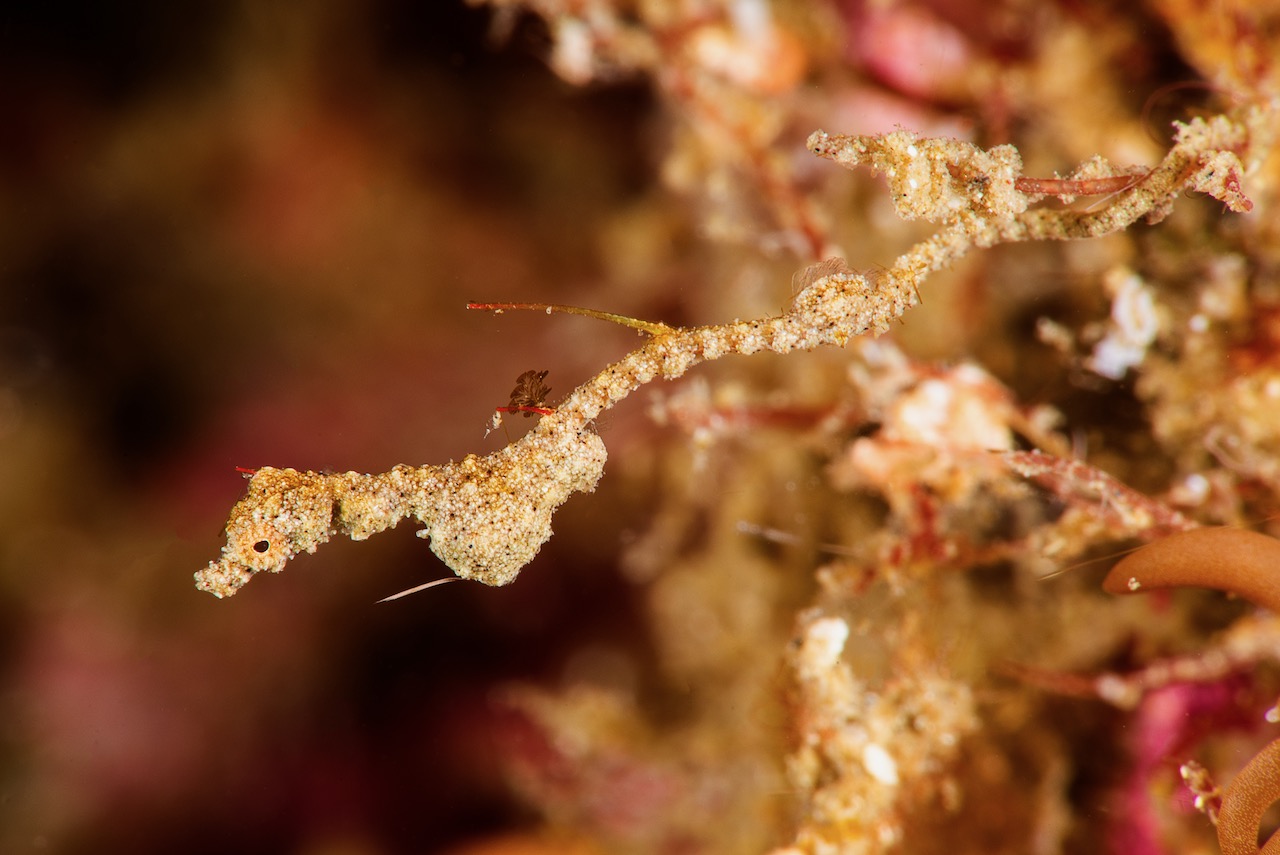
We should also note that some of the marine life you might see in the Lembeh Strait is endemic to the region, meaning it can’t be seen anywhere else in the world. This is thanks to the unique evolutionary pattern taken by many animals in this isolated part of the world that sits between the Asian and Australian continents.
Famous Lembeh endemics include:
Lembeh seadragons (Kyonemichthys rumengani)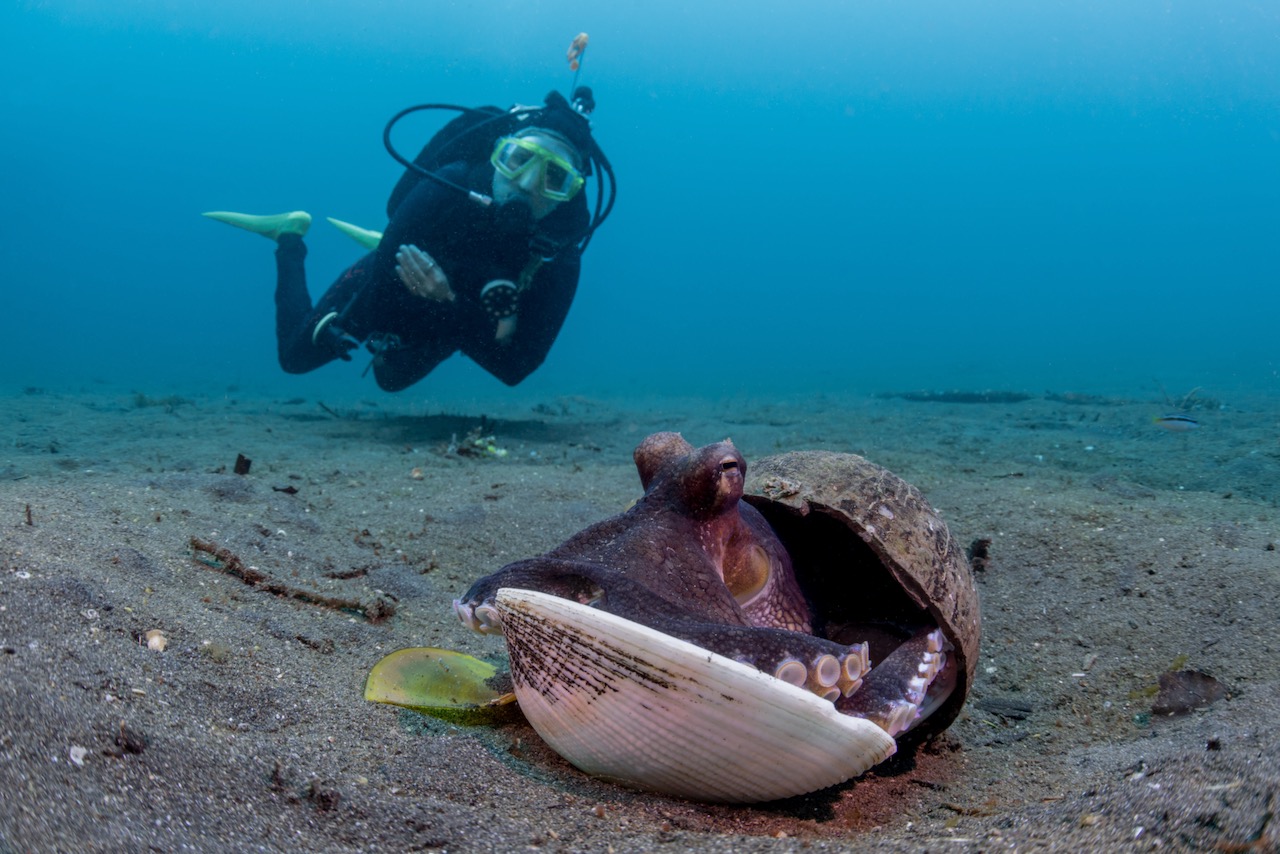
The diving in Lembeh Strait is nice and easy. This is tropical water, with all the benefits that come with it. Generally, there is little to no current (although some sites are more exposed to the water moving through the strait). During the summer months (usually around June to September), the sites along the island of Lembeh can be subject to larger waves and surge. These seasonal changes can result in operations opting for protected dive sites to avoid more challenging conditions.
Water Temperature: Temps range from approximately 25°C (77°F) in July, August and September to 28°C (82°F) in December, January and February.
Visibility: Divers can expect about 30m (10 ft.) visibility throughout the year.
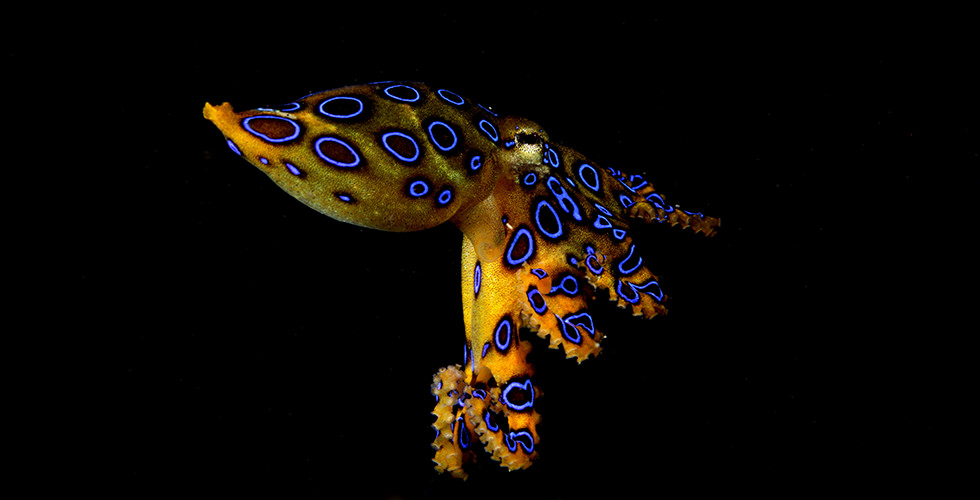
Dive site depths in the Lembeh Strait range from five to 30m (16 to 100 feet). Most of the dive sites in Lembeh follow a sandy slope downward into the strait. While not a hard and fast rule, many of the dive sites eventually transition from sand to rubble at about 15 to 20m (49 to 66 ft.) deep.
Keep in mind that the depth at which you dive may be influenced by the month/season of your trip. During the months with warmer water temperatures (December to March), the more interesting marine life is often found deeper (around 30m/100 feet), whereas during the months with the cooler water temperatures (July to September), you’ll likely stay shallower during your dives.
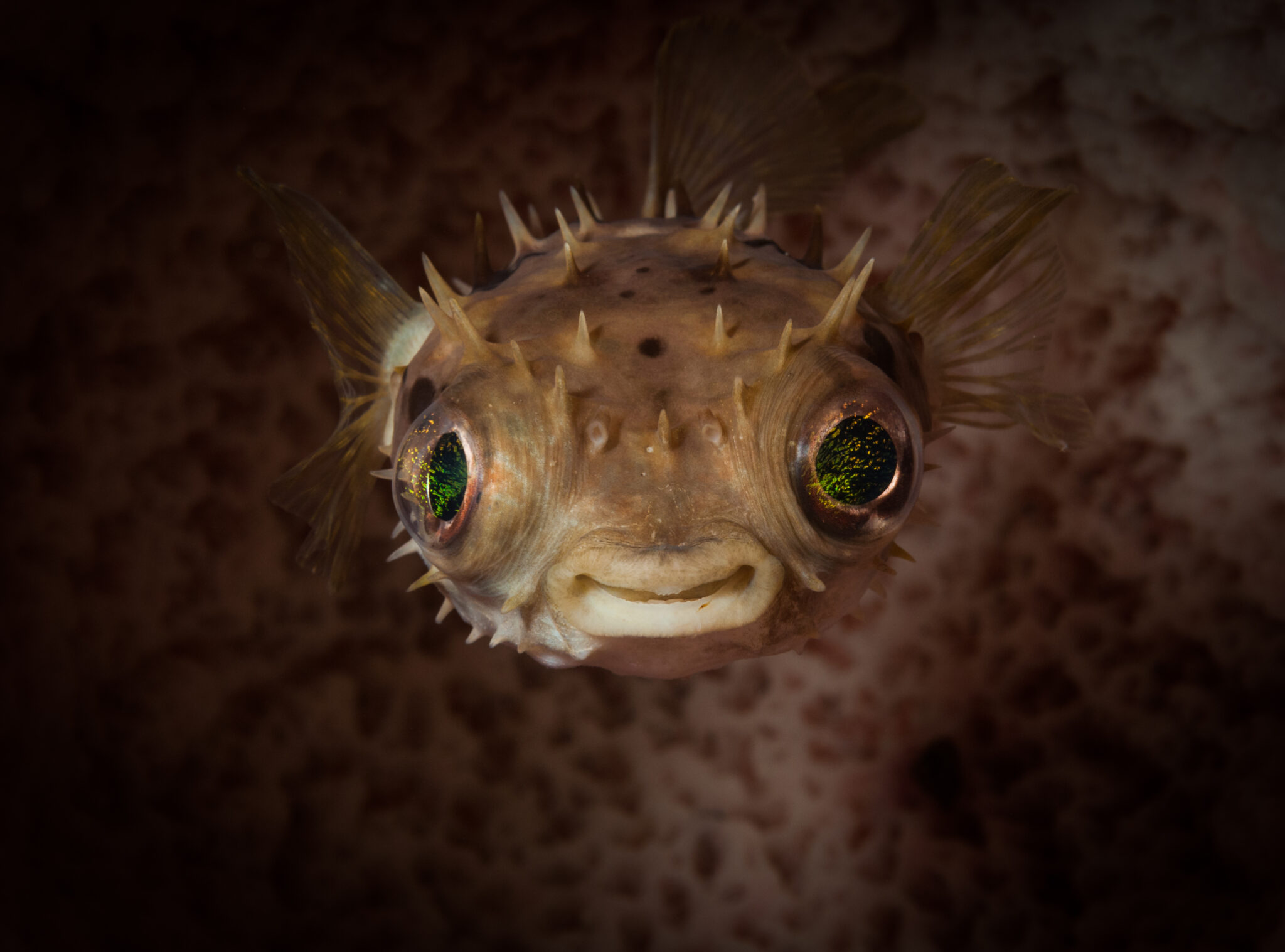
Wondering whether it’s worth splurging on enriched air (nitrox) during your trip to Lembeh? Are the decreased decompression limits and shorter surface intervals worth it?
This depends on the time of the year. As we mentioned above, dives will generally be deeper during the warmer months (December to March). In order to have enough time to find and photograph the marine life you traveled all this way to see, you’ll definitely want to dive on enriched air (nitrox).
During the cooler months, you’ll be able to stay shallower and still find interesting marine life at depths under 20m (66 ft.). In this case, enriched air (nitrox) is optional, although still recommended.
Keep in mind, you’ll need an Enriched Air (Nitrox) Diver certification in order to get enriched air fills during your trip.
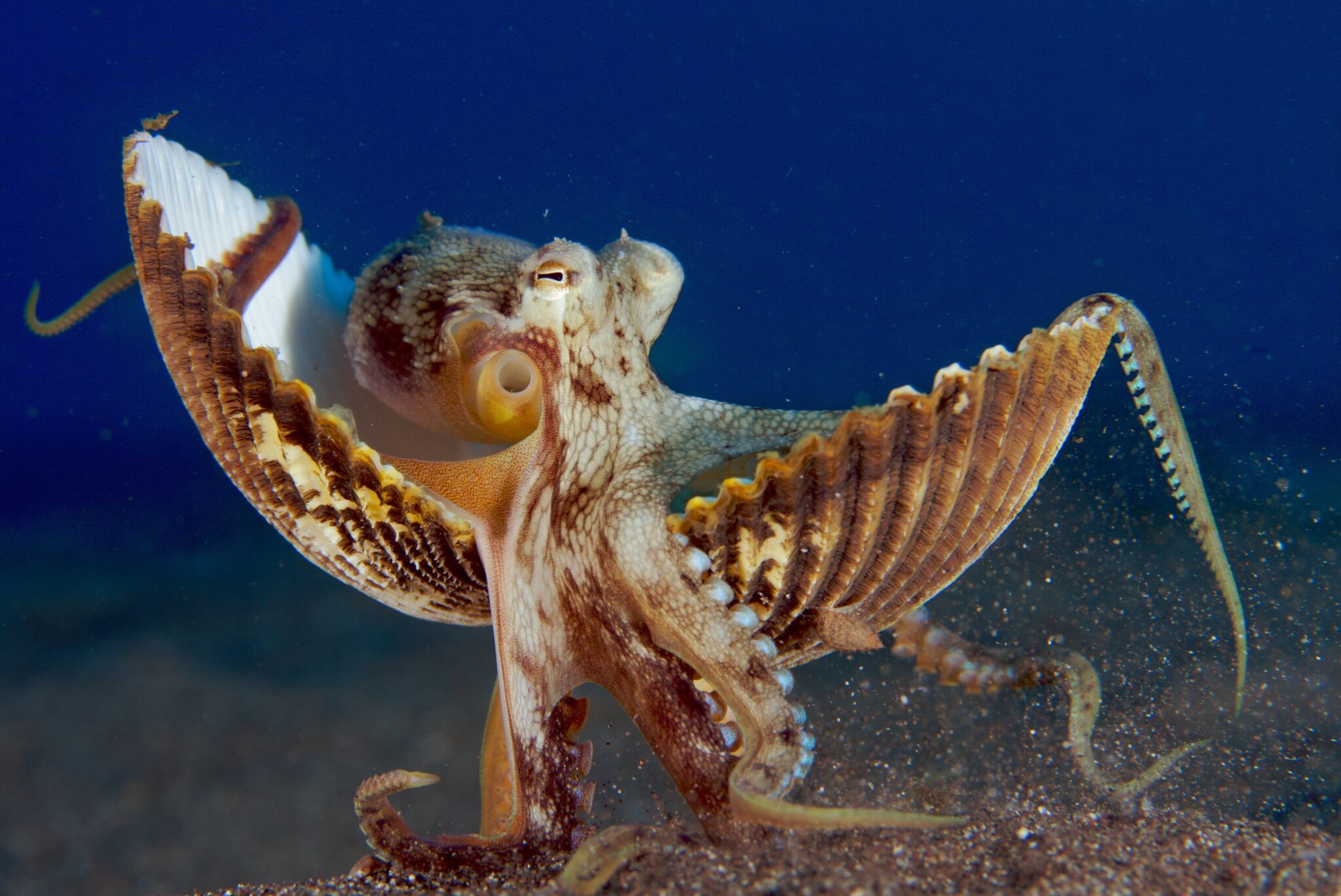
There is no bad time of year to dive in Lembeh. The waters are warm and calm virtually every day of every month, and Lembeh’s famous marine life remains in the area year-round.
With that said, different seasons can impact which dive sites you’ll visit and the depth of marine life.
The dive sites in the Lembeh Strait line the west coast of Lembeh Island and the east coast of North Sulawesi. During the wet season (November to June), the wind blows from west to east, creating more surge along Lembeh Island. This means most operators will dive the sites along North Sulawesi at this time.
In addition, many say that August to October is the best time to dive in Lembeh as the water is cooler during these months, meaning marine life can sometimes be spotted in shallower parts of the dive sites.
Finally, there are some dive sites along the southeast and southwest coast of Lembeh Island known as Lembeh Outside. These sites, which are not characterized by muck diving and instead are reef dives, are usually only accessible from November to April.
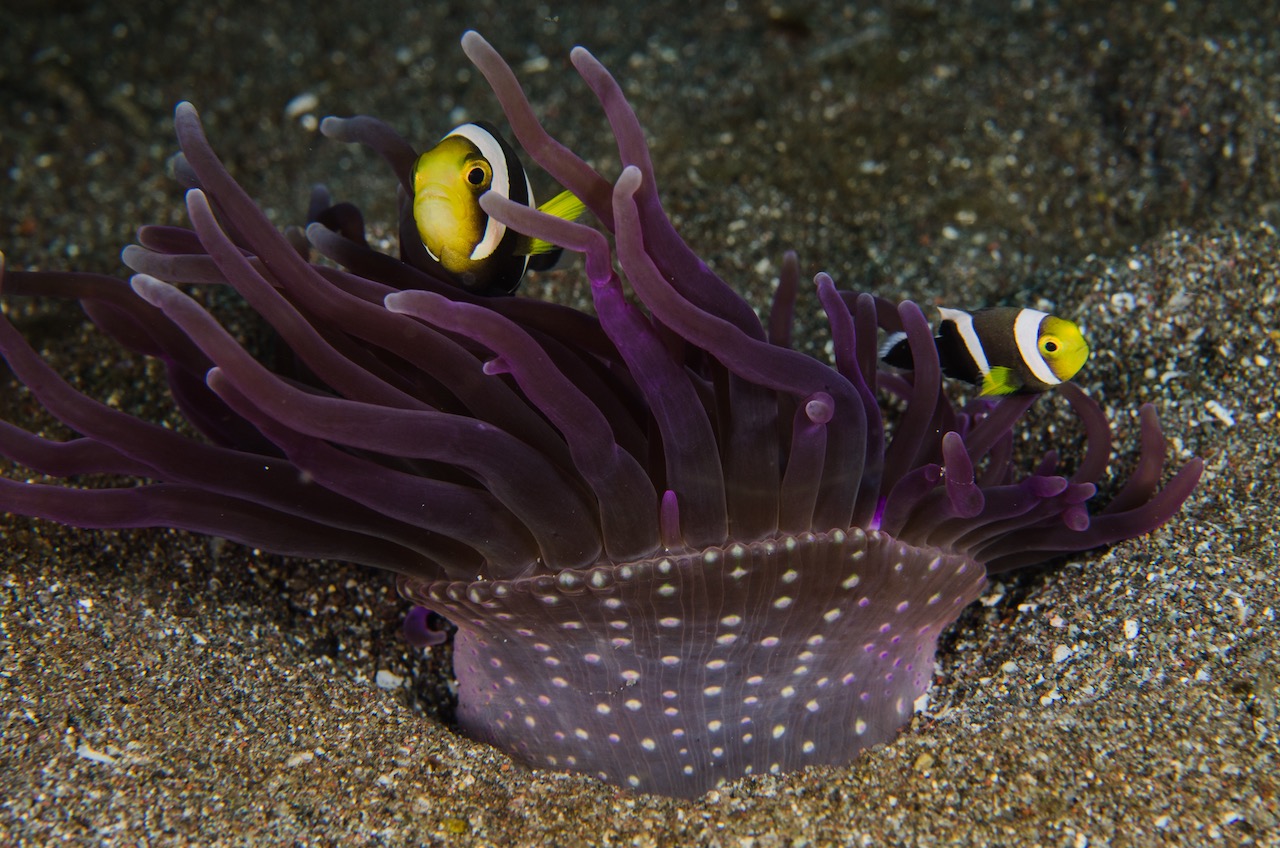
There are more than 60 dive sites in the Lembeh Strait, and this is one of those places where you really want to listen to your dive guide about where the best place is to dive. The marine life in the area tends to move around (with a few exceptions – like the mandarinfish), and your dive guide will know which dive sites are the best for what you want to see during your visit.
All things considered, however, there are a few dive sites that stand out in terms of popularity and fame. Those are:
Nudi Falls – This site is known for an abundance of nudibranchs, pygmy seahorses and mini walls. Hairball – Its patches of debris are ideal for finding hairy frogfish and octopuses. TK (Teluk Kembahu) – Featuring the Strait’s famous black sand, this sloped site is where many people spot mimic octopuses and wonderpus. Police Pier – Named for a nearby police station, this is a good site for scorpionfish and a variety of crustaceans. Critter Hunt – This dive site is a classic muck diving site with potential sightings of blue-ringed octopuses and ornate ghost pipefish.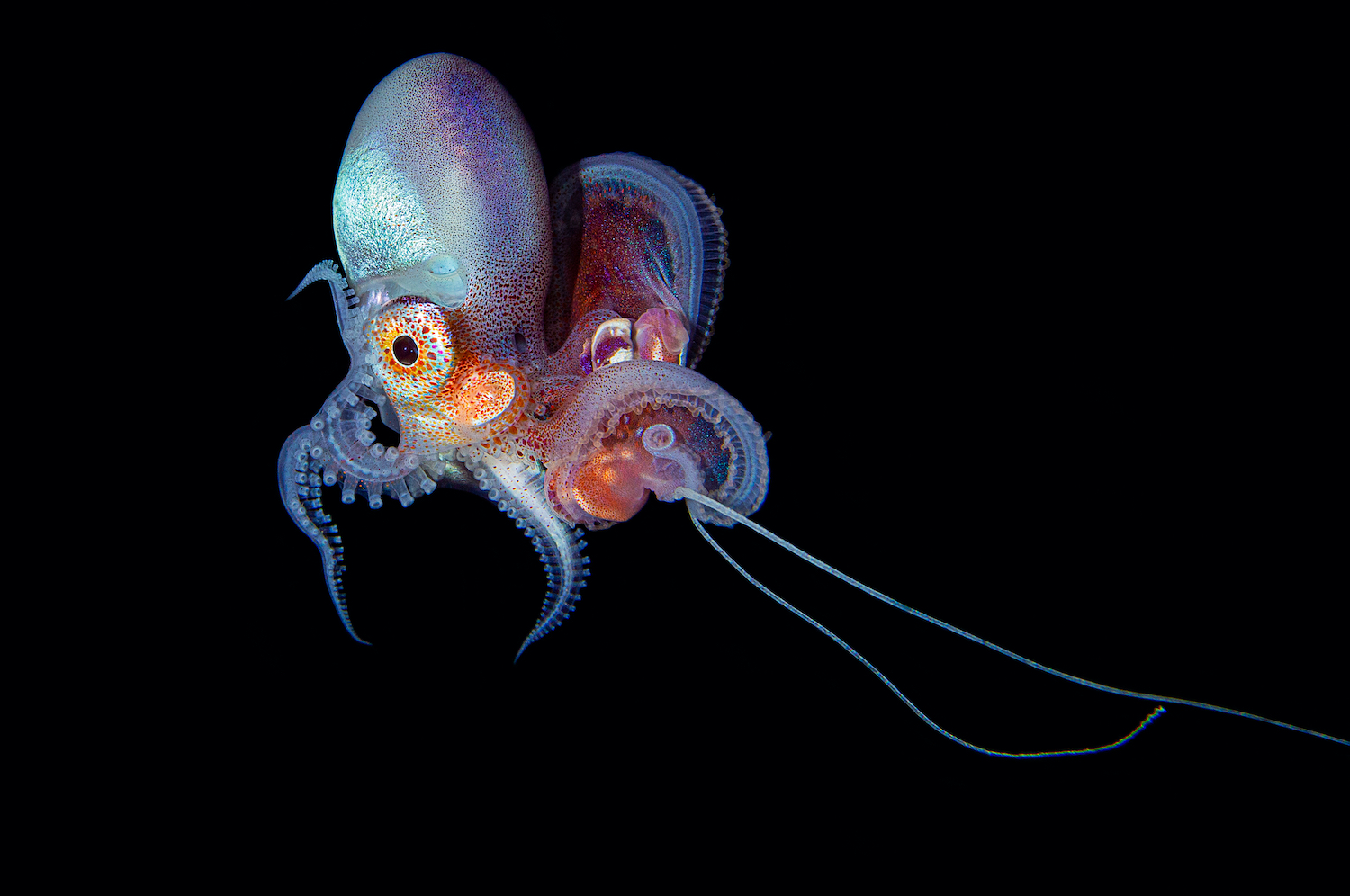
Indonesia’s Lembeh Strait is a bucket list destination. It can also be challenging to reach when coming from North America or Europe (more on that later). Because of this, you’ll want to have the best training for the diving you’ll do before departure.
The PADI Dive Centers in Lembeh do offer training on-site. However, to make the most of your time, consider completing the following courses at your local PADI Dive Shop before your trip to Lembeh.
Advanced Open Water Diver – Because many of the dive sites in the Lembeh Strait descend to depths of 20 to 30m (66 to 100 ft.), you’ll want to be certified to depths over 18m (60 ft.). Enriched Air (Nitrox) Diver – As discussed above, diving enriched air (nitrox) in Lembeh is a good idea. This will give you longer bottom times to search for marine life. Digital Underwater Photographer – In case you haven’t realized it yet, Lembeh is an underwater photographer’s paradise thanks to its unique marine life. Ensure you’re ready to get the shot of a lifetime by taking the Digital Underwater Photographer course. Peak Performance Buoyancy – Sandy bottoms are common in the Lembeh Strait, so you’ll want to make sure your buoyancy is on point in order to avoid silting your dive buddies. In addition, being able to remain low and slow will help you spot skittish species, like mimic octopus and wonderpus. Night Diver – From watching mandarinfish perform their nightly dance to black water diving in the middle of the strait, night diving in Lembeh is part of the magic of the place. Learn all about night diving procedures, including how to perform diving hand signals at night, safety precautions and dive torch use, in the PADI Night Diver Specialty course.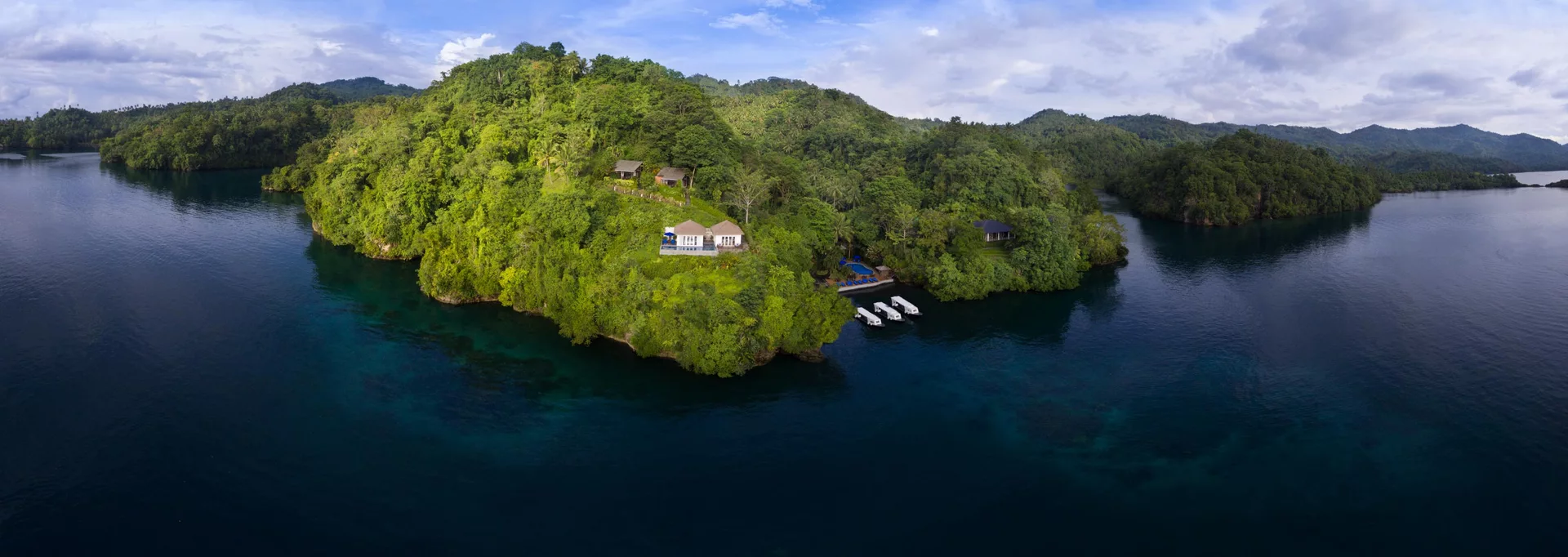 Image courtesy of Lembeh Dive Resort & Spa
Image courtesy of Lembeh Dive Resort & Spa
The majority of people who dive in the Lembeh Strait will stay at one of the many dive resorts on the island. Thanks to the growing popularity of diving in the area, there are now dive resorts to satisfy every type of diver and budget. Almost all of the dive resorts in Lembeh offer full board packages, and some include diving while others offer dives a la carte.
Recommended dive resorts in Lembeh include:
Two Fish Divers Lembeh – An outpost of a chain of Indonesian dive shops, this resort is located in a private cay on its own private beach. White Sands Beach Resort – A small boutique Five Star PADI Dive Resort perched on the Lembeh Strait’s only white sand beach, with 12 oceanfront cottages. Lembeh Dive Resort & Spa – A Five Star PADI Dive Resort on a verdant hillside in Lembeh with a waterfront pool and spa. Thalassa Dive Resort Lembeh – A full-service dive shop and resort centrally located to the majority of dive sites in the Lembeh Strait.Browse All Dive Resorts in Lembeh
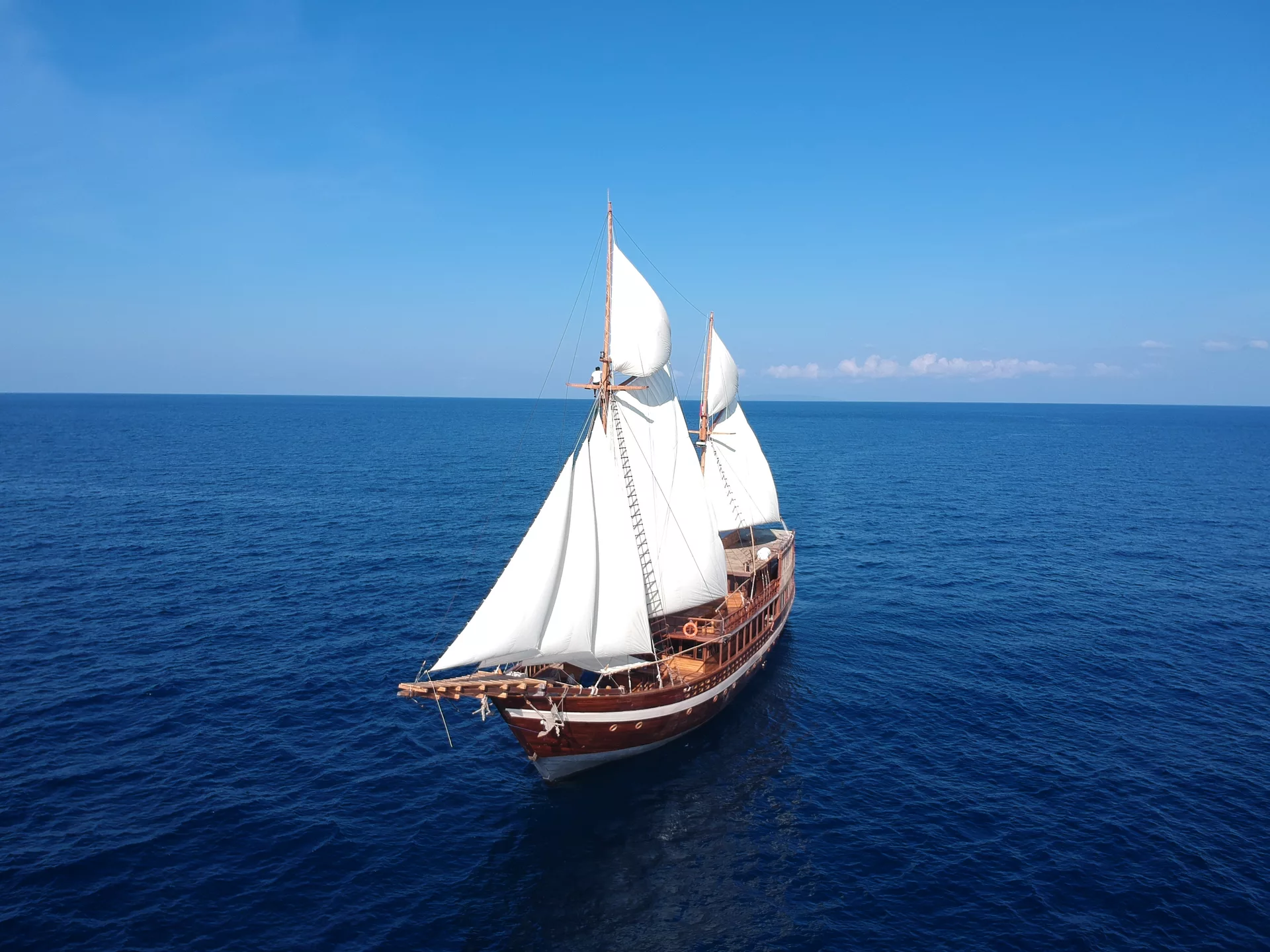 Image courtesy of Coralia Liveaboard
Image courtesy of Coralia Liveaboard
Until recently, liveaboard trips that included the Lembeh Strait were difficult to find. However, recent years have seen an increased number of boats offer trips in and around Sulawesi between the Komodo and Raja Ampat seasons.
While liveaboards and dive resorts will offer similar experiences in Lembeh, divers traveling by dive safari boat will also enjoy diving in other parts of North Sulawesi during the same trip. Most of these boats make stops in Bunaken and Bangka, and some even travel as far as the Togian Islands.
A few of the liveaboard boats currently offering Lembeh itineraries include:
Browse All Liveaboards in Indonesia
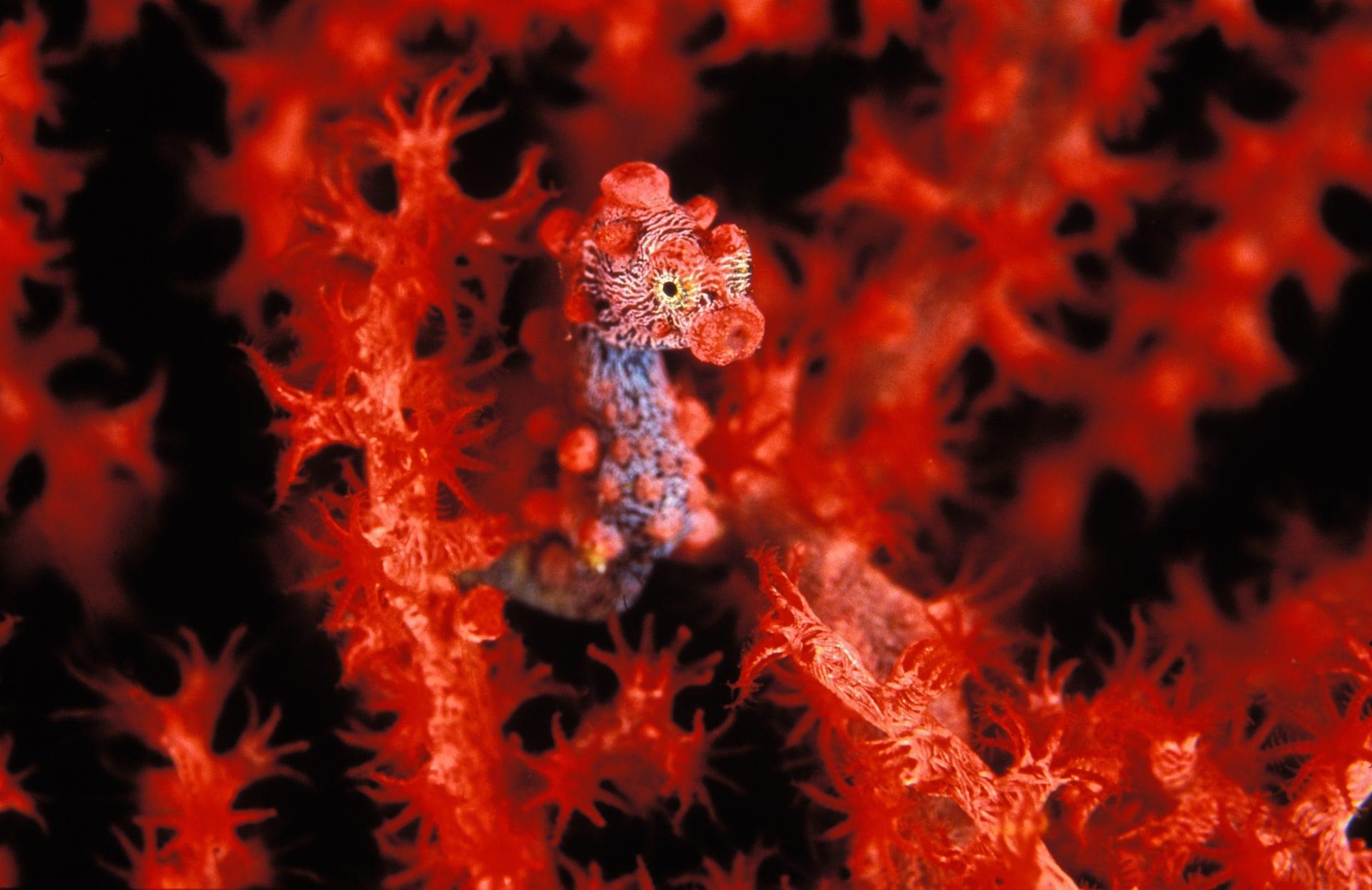
Reaching the Lembeh Strait is easier than ever before. Your trip will likely begin with a flight to Sam Ratulangi International Airport in Manado, North Sulawesi. Direct flights are available from Singapore, Bali (Denpasar), Jakarta, Sorong and Makassar.
From the airport, you’ll need to arrange a transfer with your accommodation or hire a taxi to Bitung. The trip takes just under one hour thanks to the brand new toll road, which opened in 2022.
Finally, from Bitung, you’ll need to take a short boat ride across the Strait to your dive resort of choice. This can usually be arranged through your accommodation. The journey takes about 15 to 30 minutes.
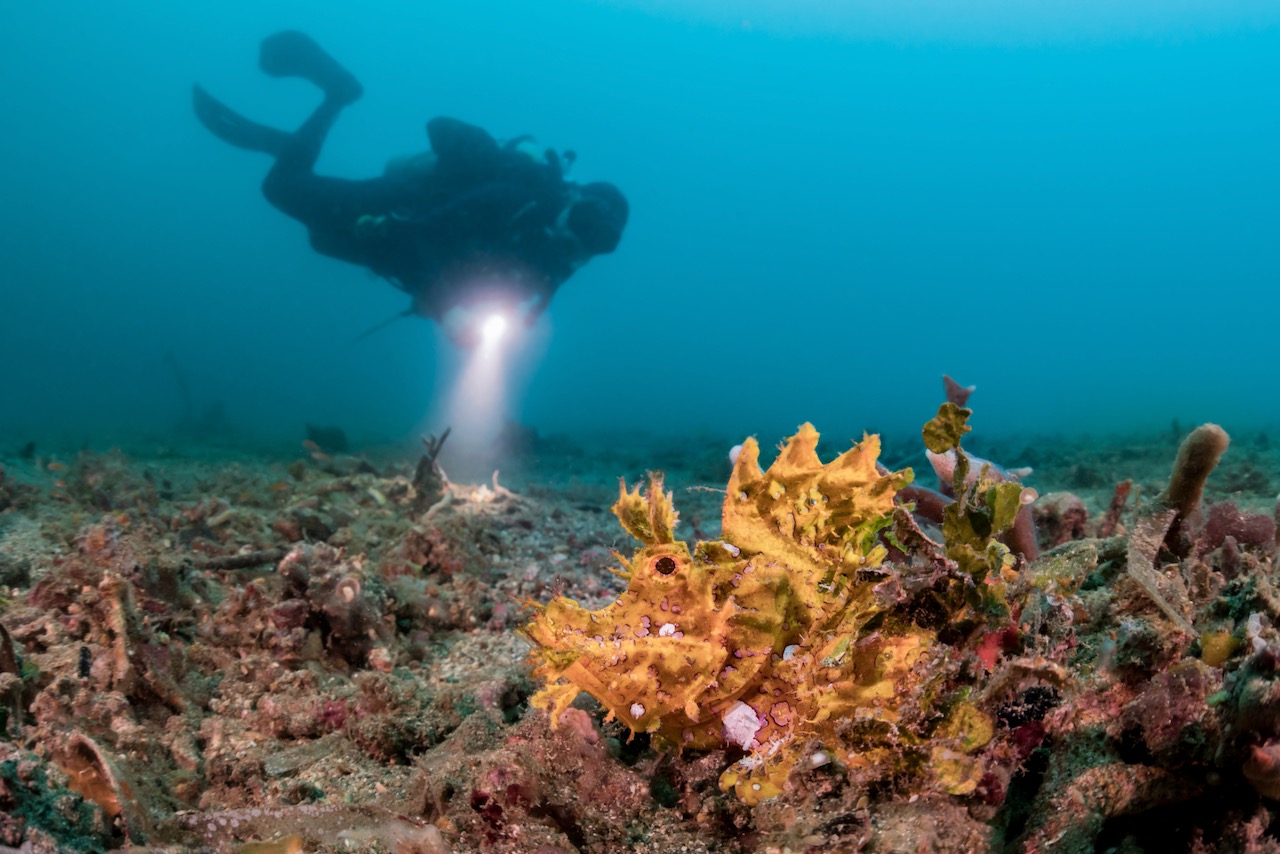
Packing for any dive trip is a challenge. In addition to your normal set of dive gear, clothing and toiletries, here are some bits and bobs that also might be useful:
Underwater Camera – You’re going to want something to document the weird and wacky marine life in Lembeh. Full Wetsuit – A 3mm or 5mm wetsuit will be sufficient. Just make sure it isn’t a shorty in order to protect yourself against jellyfish stings and other irritants in the water. Dive Torch/Flashlight – Night diving is awesome in Lembeh, so ensure you’re prepared with your own dive torch/flashlight. This can also be helpful during day time dives to illuminate the vibrant colors of the local marine life. Magnifying Glass – Even divers with perfect eyesight can benefit from using a waterproof magnifying glass when muck diving. Throw it in your BCD pocket for when you spot something tiny. Dive Slate – The marine life in the Lembeh Strait is so unusual that most of the species don’t have hand signals, beyond crab, shrimp, eel, etc. Ensure you and your buddy know exactly what you’re looking at by writing down the species you’ve spotted. This will also help you keep a list of everything you see on a dive until you can jot it down in your logbook later on.
There is so much more to explore in North Sulawesi outside of Lembeh, if you have the time. Underwater, both Bunaken National Marine Park (known for its vibrant coral reefs and tropical marine life) as well as Bangka Island (a remote paradise with unspoiled beaches and pristine dive sites) are well worth a few days each. Both are home to wonderful dive resorts at which to base yourself.
Topside, visitors to Lembeh should also make an effort to tour Tangkoko National Park. This ecologically diverse area is home to the endemic Celebes crested macaque, the tiny tarsier and the colorful Sulawesi hornbill, among many more unique species. A day trip or an overnight trip to the park is an experience you won’t soon forget.
In conclusion, Lembeh is one of the best diving destinations for muck diving around the world. As an underwater photographer or wildlife enthusiast, this is a trip that definitely needs to be added to your bucket list.
Start Planning Your Lembeh Dive Trip Here
Share This